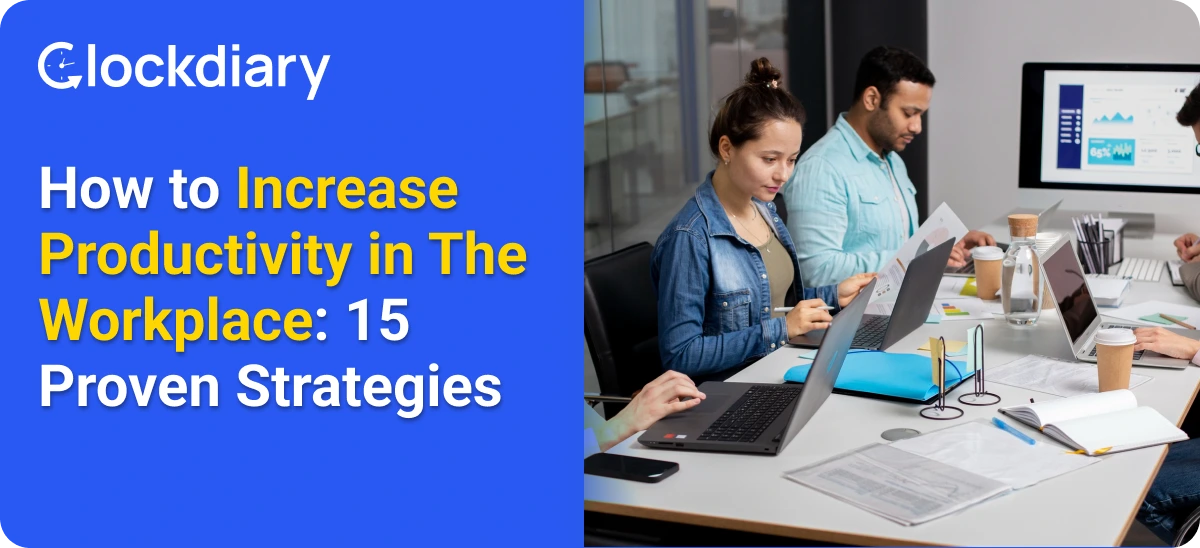

Are you looking to unlock your team’s full potential and drive business success? Recent studies reveal that the average employee is productive for only about 2 hours and 53 minutes during an 8-hour workday. This means a significant portion of the workday isn’t utilized effectively, highlighting a pressing need for effective strategies to enhance productivity. But, a definite question arises: “ how to increase productivity in the workplace?”
In this article, we’ll explore 15 proven strategies designed to boost workplace efficiency, improve employee engagement, and ultimately, increase productivity in the workplace. By tracking your daily activities and implementing these approaches, you can create a more dynamic and productive work environment that benefits both your team and your bottom line.
| Quick Summary Looking to boost productivity in the workplace? This comprehensive guide covers 15 proven strategies to enhance employee performance, from setting clear goals and promoting work-life balance to leveraging modern technology and fostering a high-performance culture. Plus, discover real-world case studies of companies like Google, Microsoft, and Salesforce that mastered workplace productivity. Learn how Clockdiary can help streamline time tracking, task management, and reporting to optimize workplace efficiency. What you’ll find in this blog: ⦿ 15 actionable strategies to increase workplace productivity ⦿ How to measure productivity effectively and track key metrics ⦿ Overcome common productivity challenges (e.g., poor communication, outdated tech) ⦿ Build a high-performance work culture to drive growth ⦿ Real-world examples from top companies ⦿ How Clockdiary enhances productivity with AI-driven tools like time tracking, smart assistants, and detailed reporting. |
Productivity is the backbone of any successful organization. When employees are engaged, motivated, and supported with the right tools, their efficiency skyrockets. Here are 15 proven strategies to increase productivity in the workplace and create a thriving work environment.
Without clear, measurable business goals, employees may struggle to prioritize tasks effectively. According to a study by Wrike, 48% of employees reported being productive less than 75% of the time, highlighting the need for clear goal-setting to enhance workplace productivity.
Setting SMART (Specific, Measurable, Achievable, Relevant, and Time-bound) goals ensures that everyone understands their responsibilities and objectives. Regularly communicating these goals through team meetings or digital project management tools like Clockdiary keeps everyone aligned and accountable.
A rigid 9-to-5 schedule may not suit every employee. Offering flexible work arrangements, such as remote work or hybrid schedules, allows employees to work when they’re most productive.
A study by Stanford University found that hybrid work had no negative impact on productivity and greatly improved retention rates. Moreover, flexible work arrangements improve job satisfaction and reduce stress, leading to higher employee productivity.
Working non-stop can lead to burnout and decreased work efficiency. Encouraging short breaks throughout the day—such as a five-minute stretch or a coffee break or the Pomodoro Technique—helps employees recharge.
The Pomodoro Technique, which involves 25-minute work sessions followed by five-minute breaks, has been shown to improve focus and performance, and thus go a long way to increase productivity in the workplace.
A workplace that promotes open communication encourages collaboration and innovation. Encouraging employees to share ideas, ask questions, and provide feedback leads to stronger team dynamics and improved employee engagement. Utilizing communication tools like Slack or Microsoft Teams can help keep everyone connected.

Distractions like unnecessary notifications, background noise, and frequent interruptions can significantly reduce productivity. According to a study by Wrike, 18% of employees reported being productive less than half of the time, indicating the impact of distractions on productivity.
Creating a distraction-free environment by implementing quiet zones, limiting non-essential emails, and allowing employees to customize their workspace can increase work performance. Some good productivity extensions for Chrome would certainly prove to be a boon for you.
Micromanagement can stifle creativity and reduce employee morale. As Steve Jobs noted, “You cannot mandate productivity, you must provide the tools to let people become their best.”
So, you should always trust employees to complete their tasks independently while offering guidance when necessary. Providing autonomy promotes a sense of ownership and responsibility, which is absolutely essential to build a high-performing team. This, in turn, leads to higher engagement and workplace productivity.
Regular, constructive feedback helps employees improve their performance. Rather than waiting for annual reviews, managers should provide ongoing feedback that highlights strengths and suggests areas for development.
Using the “feedback sandwich” approach—positive feedback, constructive criticism, positive reinforcement—can make critiques more effective.
Engaged employees are more productive and committed to their work. Conducting surveys, one-on-one meetings, and performance reviews can help identify areas where employees feel disengaged.
Addressing these concerns promptly ensures a more motivated workforce, something which is extremely important to increase productivity in the workplace.
A well-designed workspace contributes to employee well-being and efficiency. Providing ergonomic chairs, adjustable desks, good lighting, and proper ventilation can minimize discomfort and fatigue. Adding motivational elements like inspirational quotes, plants, or artwork can help build a positive workplace, which further boosts morale.
Productivity can be improved by effective time management. As Benjamin E. Mays said, “The tragedy in life doesn’t lie in not reaching your goal. The tragedy lies in having no goal to reach.”

Encourage employees to prioritize tasks using tools like the Eisenhower Matrix, time-blocking techniques, or good time management apps. Training employees on time management strategies can lead to better work efficiency.
Continuous learning enhances employee skills and job satisfaction. Providing training programs, workshops, and access to online courses ensures employees stay updated with industry trends. A well-trained workforce performs better and contributes to overall company growth.
Acknowledging employee efforts through recognition programs, incentives, or simple appreciation messages fosters motivation. A study by the University of Oxford found that happy workers are 13% more productive.
When employees feel valued, they are more likely to stay engaged and productive. Consider implementing employee-of-the-month programs, performance bonuses, or peer recognition initiatives to boost productivity in the workplace.
Long, unproductive meetings can drain time and energy. Standing meetings encourage brevity and active participation. Keeping meetings short and to the point ensures that discussions remain focused and productive.
Investing in modern technology streamlines operations and reduces time spent on manual tasks. Artificial Intelligence (AI) is increasingly being adopted to increase productivity in the workplace. A recent survey reveals that 85% of finance chiefs see productivity improvements as the main driver of AI investment.
By integrating advanced tools and technologies, businesses can automate routine processes, allowing employees to focus on more strategic tasks.
As Helen Keller aptly noted, “Alone we can do so little; together we can do so much.” Strong team dynamics lead to better collaboration and efficiency.
Organizing team-building activities such as workshops, retreats, or fun challenges helps build trust among employees. A positive workplace culture improves communication and overall workplace efficiency.
Measuring workplace productivity is crucial for business success. By tracking performance and efficiency, companies can optimize workflows, enhance employee engagement, and, thereby increase productivity in the workplace. Here’s how you can effectively measure productivity at work.
To measure employee productivity, businesses must establish clear and measurable goals. Understanding the difference between output and input is key.
Output
Output refers to the tangible results of work, such as products manufactured, services delivered, or revenue generated. Businesses should measure output to assess efficiency and work productivity accurately.
Input
Input includes the resources, time, and effort invested in completing tasks. It encompasses working hours, materials used, and employee energy dedicated to specific assignments.
Below is a list of the key metrics to calculate productivity of an employee:
The formula to calculate output per worker-hour goes something like this:

For example, if a team produces 500 units in 100 hours, the output per worker-hour is 5 units/hour.
Calculate it as:

If a company earns $1,000,000 with 50 employees, the revenue per employee is $20,000.
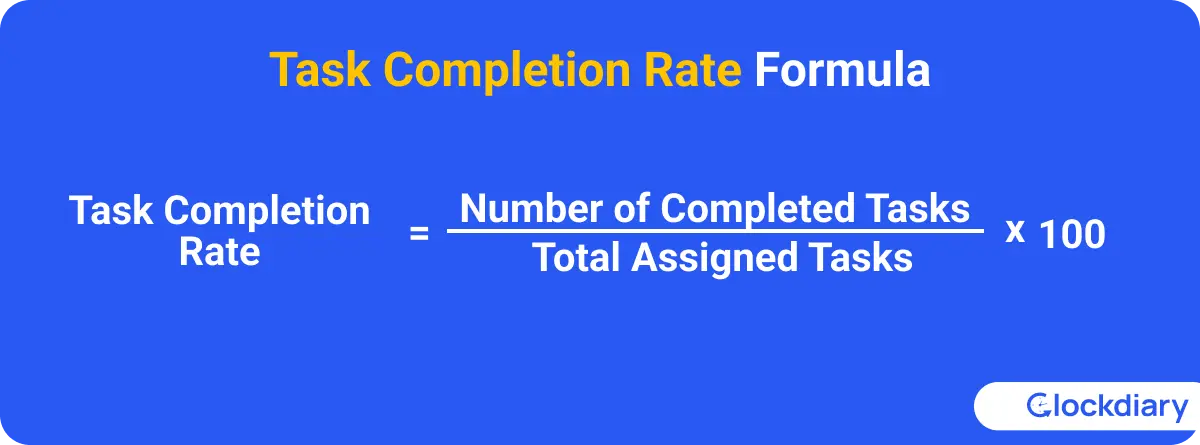
Completing 90 out of 100 tasks results in a 90% completion rate.
Once productivity metrics are established, businesses need to collect data consistently.
Data Collection
Utilizing time tracking cum project management tools like Clockdiary along with performance reviews can help gather accurate data. Surveys, self-assessments, and customer feedback are also valuable sources of information.
Regular Tracking
Monitoring productivity regularly ensures that progress is maintained. Weekly or monthly evaluations allow managers to identify patterns and adjust strategies accordingly. It must be pointed out here that regular tracking is extremely important to increase efficiency and productivity in the workplace.
After collecting data, businesses must analyze results to identify areas for improvement and implement necessary changes.
Optimize Workflows
Evaluating workflows can help eliminate inefficiencies. Streamlining processes and automating repetitive tasks can increase productivity in the office and reduce wasted time.
Improve Training
Investing in employee training ensures workers have the skills needed to perform efficiently. Continuous learning opportunities enhance performance and job satisfaction.
Ensure A Positive Work Environment
A supportive and motivating workplace encourages employees to be more productive. Recognizing achievements, offering work-life balance, and promoting open communication contribute to a positive work culture.
Delegate Tasks Effectively
Proper delegation ensures that work is evenly distributed among employees, preventing burnout and increasing efficiency. Assigning tasks based on strengths can also enhance output quality, which in turn, increase productivity in the workplace.
Leveraging appropriate tools can simplify the process of measuring and analyzing productivity.
Time Tracking Software
Ever wondered how to improve efficiency in the workplace using time tracking software? Time-tracking tools like Clockdiary help monitor the amount of time employees spend on various tasks and projects. This data is essential for assessing efficiency and identifying areas for improvement.
Project Management Tools
Project management software, again an aspect where Clockdiary shines through, assists in planning, executing, and monitoring projects. Features often include task assignments, progress tracking, and billing status, contributing to a comprehensive view of productivity.
Performance Dashboards
Dashboards provide visual representations of key performance indicators (KPIs) and metrics. They offer real-time insights into productivity levels, facilitating quick assessments and informed decisions.
Surveys and Feedback
Regular surveys and feedback mechanisms can gauge employee engagement and customer satisfaction. This qualitative data complements quantitative metrics, providing a holistic view of workplace productivity.
By defining clear metrics, systematically collecting data, analyzing results, and utilizing appropriate tools, organizations can effectively measure and increase productivity in the workplace.
Workplace productivity often faces obstacles such as miscommunication, outdated technology, and low employee motivation. Identifying these challenges and implementing effective solutions can significantly enhance efficiency and workplace morale.

Miscommunication leads to errors, misunderstandings, and delays. Studies indicate that poor communication accounts for approximately 280 hours lost per employee annually, as time is spent seeking clarifications and addressing misunderstandings. The effect becomes more pressing when it comes to managing virtual teams.
How to Overcome It:
Relying on obsolete technology can impede workflow and efficiency. According to Forbes, using outdated tech can drag productivity, as older systems often fail to support newer, more efficient processes.
How to Overcome It:
Insufficient training results in skill gaps and decreased employee productivity. Notably, 59% of employees reported receiving no workplace training, leading many to pursue self-directed learning.
How to Overcome It:
Unaddressed conflicts can erode trust and hinder teamwork. Harvard Business School emphasizes that framing conflicts within an organization’s broader mission can help resolve disputes and promote collaboration.
How to Overcome It:
Ineffective time management leads to missed deadlines and increased stress. Studies indicate that 80% of employees spend half their time correcting avoidable mistakes.
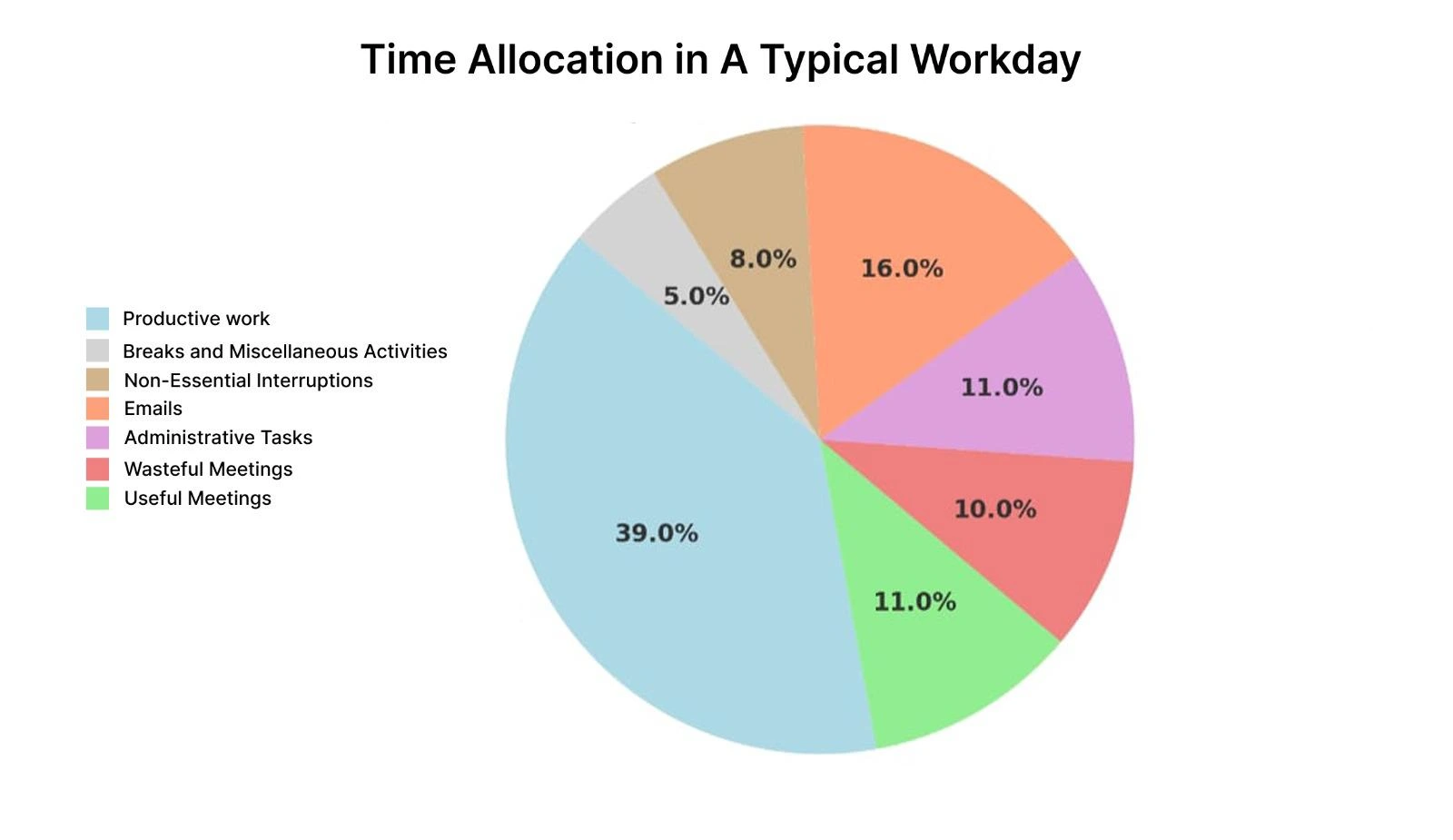
How to Overcome It:
Employee motivation is closely linked to work performance. In this context, we would like to point out that approximately 39% of employees feel underappreciated, and 77% would agree to work harder if they received more recognition.
How to Overcome It:
A decline in performance can stem from various factors, including disengagement and lack of support. We would like to point out here that in 2024, employee engagement in the U.S. dropped to 31%, the lowest level in a decade.
How to Overcome It:
A high-performance work culture fosters engagement, accountability, and innovation, helping businesses stay competitive. By prioritizing continuous learning, employee empowerment, and strategic goal-setting, companies can create an environment where teams thrive.
Ineffective communication can lead to misunderstandings, errors, and decreased productivity. A study by Grammarly and The Harris Poll revealed that poor communication costs U.S. businesses up to $1.2 trillion annually, affecting productivity, morale, and growth.
Encouraging employees to develop new skills enhances productivity and adaptability. Here’s how to go about it:
Empowering employees enhances engagement and proactive behaviors. A study published in the Journal of Environmental Research and Public Health found that employee empowerment positively influences taking-charge behaviors, especially when coupled with perceived organizational support.
Establishing clear core values aligns employees with the organization’s mission and fosters a cohesive culture. The “State of Values Report 2024” emphasizes that core values drive decisions, relationships, and professional growth across diverse groups.
Regular communication and integration of these values into daily operations ensure a unified and purpose-driven workforce.
Accountability correlates with trust and team efficacy. A study in Frontiers in Psychology demonstrated that team accountability is strongly related to trust and commitment.
Moreover, a culture of accountability drives commitment and responsibility, which is extremely important to increase work performance.
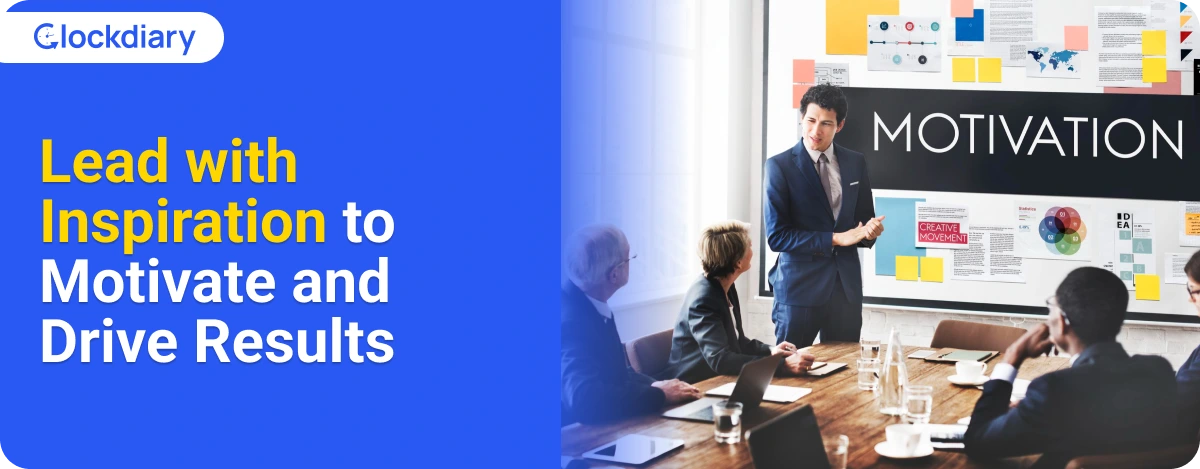
Inspirational leadership significantly helps employees overcome procrastination, thereby impacting employee motivation and organizational outcomes. Research published in the Open Journal of Leadership suggests that transformational leadership positively influences organizational performance.
Leaders who communicate a compelling vision and demonstrate commitment inspire employees to achieve excellence.
Clear, strategic goals provide direction and facilitate business growth. However, only 2% of leaders are confident they will achieve 80–100% of their strategic objectives.
Fostering a culture of innovation is crucial for maintaining a competitive edge. The World Economic Forum reports that by 2027, 44% of workers’ core skills will be disrupted, underscoring the need for continuous innovation. Providing platforms for idea sharing and rewarding creative solutions can stimulate innovation and increase efficiency in the workplace,
By implementing these strategies, businesses can cultivate a high-performance culture that drives long-term success, thereby increasing productivity in the workplace.
Leading tech companies like Google, Microsoft, and Salesforce have implemented innovative strategies to increase productivity in the workplace. By examining their approaches and outcomes, businesses can gain valuable insights into fostering efficiency and employee satisfaction.
Strategy: “20% Time” Policy
Google introduced the “20% Time” policy, allowing employees to dedicate 20% of their workweek to projects they are passionate about, beyond their regular responsibilities. This initiative aimed to promote creativity and innovation, something which is extremely important to increase personal productivity in the workplace.
Outcome:
Strategy: Implementation of Microsoft Viva Insights
Microsoft utilized its own tool, Microsoft Viva Insights, to analyze and enhance employee productivity and well-being. The platform provided personalized recommendations to help employees manage their time effectively and maintain work-life balance.
Outcome:
Strategy: Focus on Employee Engagement and Healthier Work Environments
Salesforce prioritized creating meaningful employee experiences by leading with flexibility and addressing the immediate needs of their workforce. This approach aimed to deepen engagement, drive productivity, and build a more inclusive workforce.
Outcome:
These case studies demonstrate that investing in employee autonomy, well-being, and engagement can lead to substantial improvements in workplace productivity and innovation.
Clockdiary is a powerful AI-powered time-tracking tool that helps businesses monitor work hours, analyze productivity, and optimize workflows. By providing real-time insights into employee performance, Clockdiary enables teams to improve efficiency and stay on top of deadlines.
Here’s how Clockdiary helps increase productivity in the workplace:
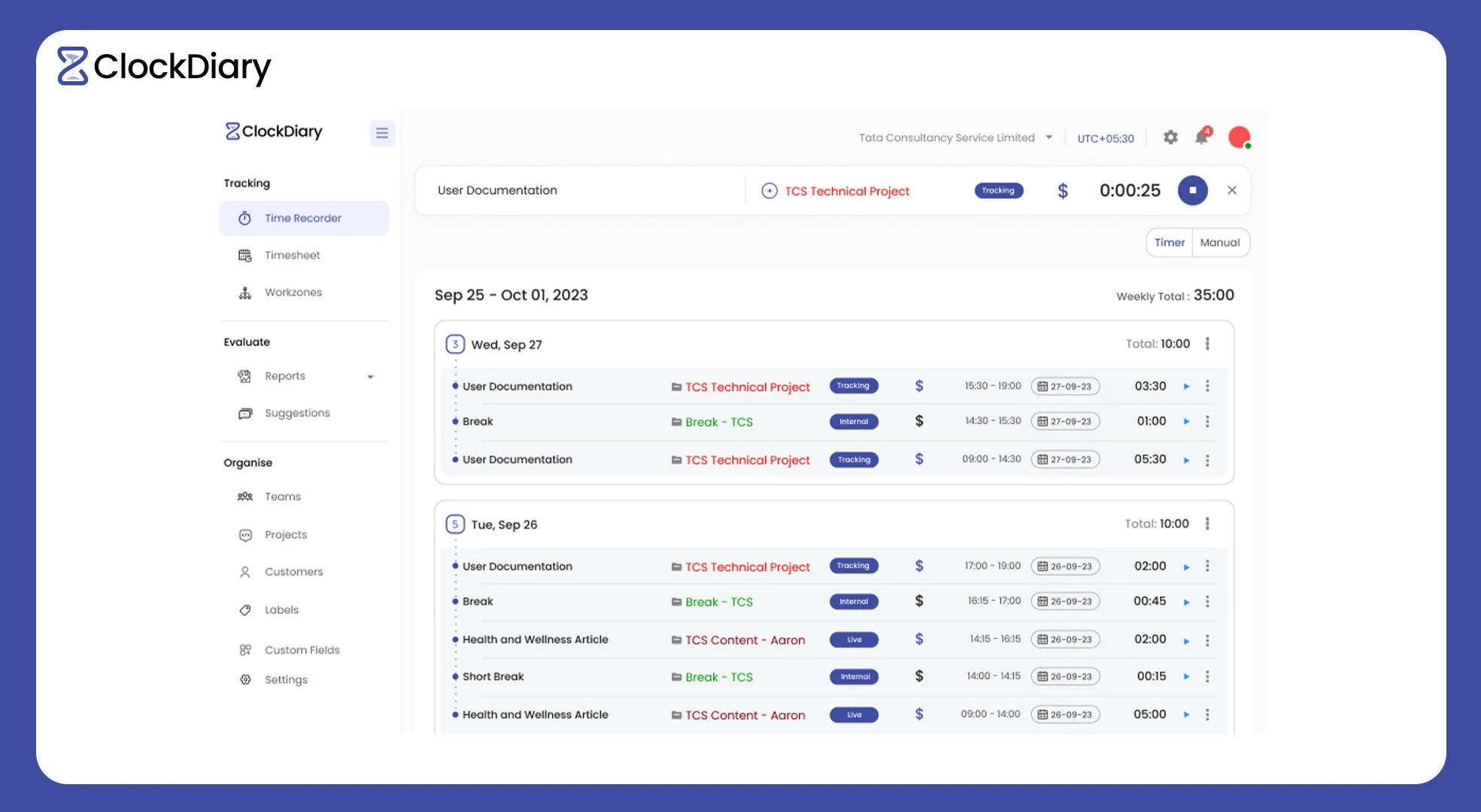
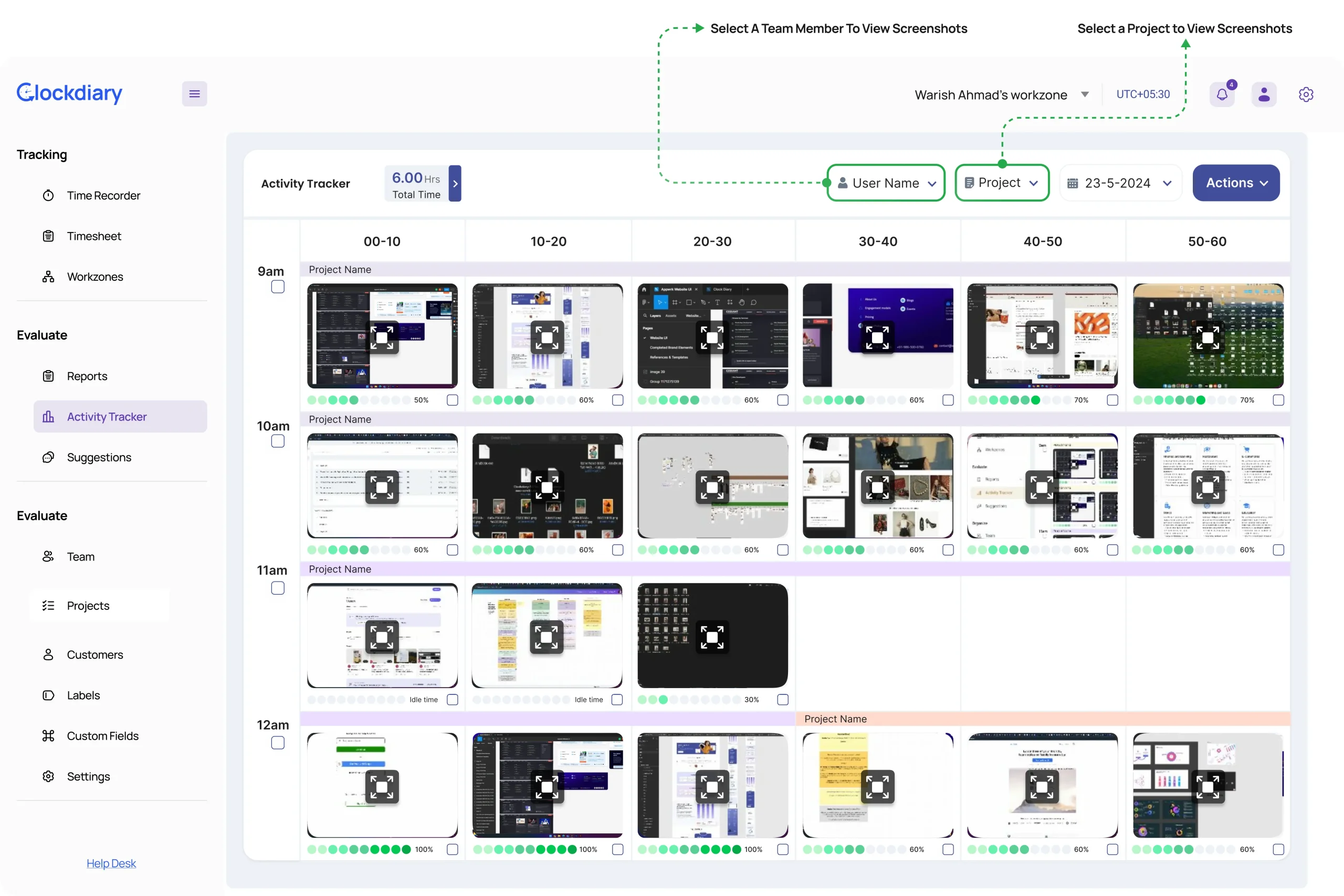

Clockdiary empowers businesses with data-driven insights, ensuring maximum efficiency and improved team collaboration. By leveraging these features, organizations can significantly improve productivity in the workplace.
So, what are you waiting for? Integrate this technological wizardry into your workplace and see the difference for yourself.
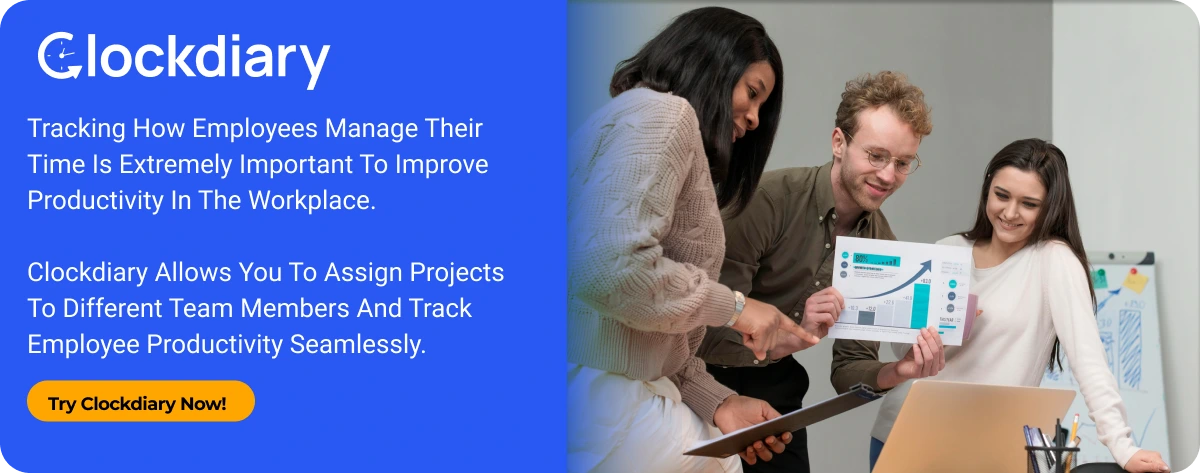
Frequently Asked Questions:
Employee productivity in the workplace is influenced by various factors, including the work environment, technology, training opportunities, leadership, and company culture. A positive and well-structured workplace promotes focus and efficiency, while poor management, outdated tools, and lack of engagement can hinder overall work performance.
Improving employee productivity involves implementing strategies such as setting clear goals, providing regular feedback, and offering professional development opportunities. Additionally, ensuring a positive work environment and utilizing effective communication tools can significantly enhance overall performance and efficiency.
Implementing time-tracking software like Clockdiary enhances workplace efficiency by providing real-time insights into how work hours are allocated, enabling better task management and resource planning. Clockdiary offers features such as an automatic timer for tracking work hours across projects, detailed reports for analyzing productivity, and integration with various platforms to streamline workflows.
Artificial Intelligence (AI) enhances workplace productivity by automating routine tasks, analyzing work patterns, and providing actionable insights. Clockdiary, an AI-powered time-tracking application, leverages AI through features such as an auto tracker that records time spent across apps and websites, offering a comprehensive view of activities and idle detection that alerts users when they’ve been inactive while the timer is running, ensuring accurate time tracking and promoting efficient work habits.
Improving workplace productivity can be achieved through strategies such as setting clear goals, automating repetitive tasks, and ensuring a positive work environment. For example, using project management tools to streamline workflows or implementing regular feedback sessions can help employees stay focused and motivated, leading to higher efficiency.